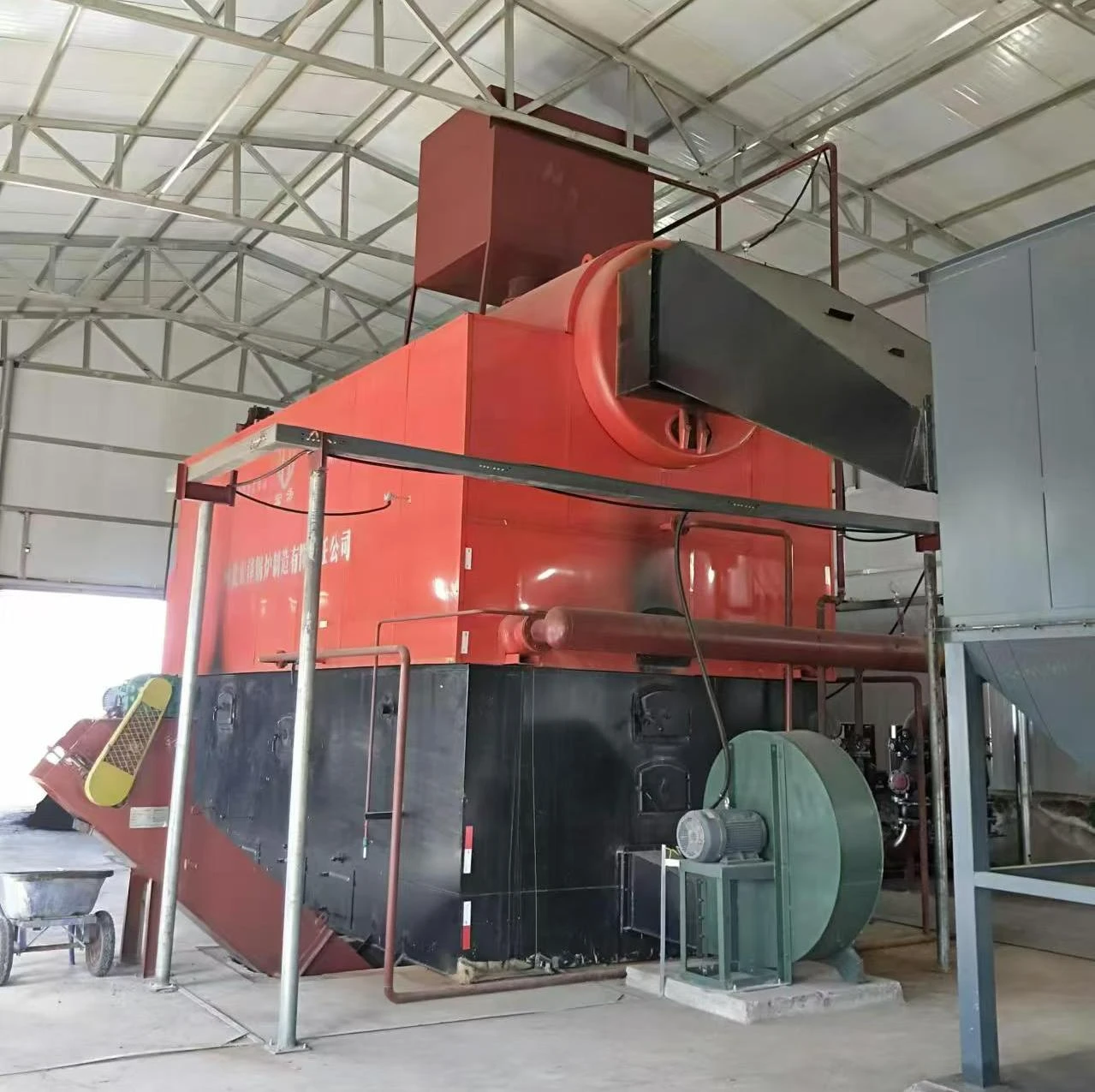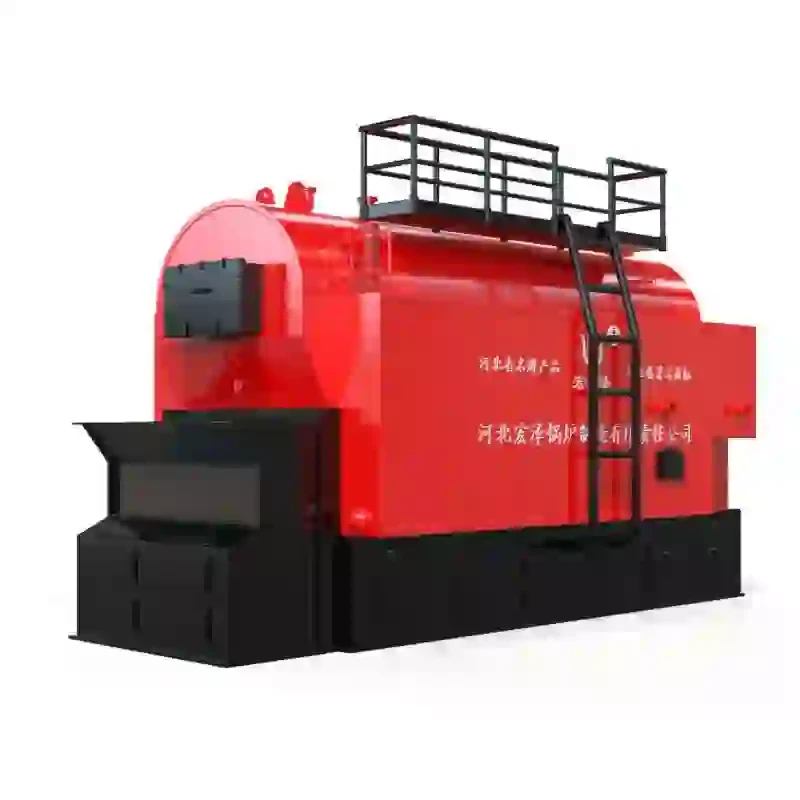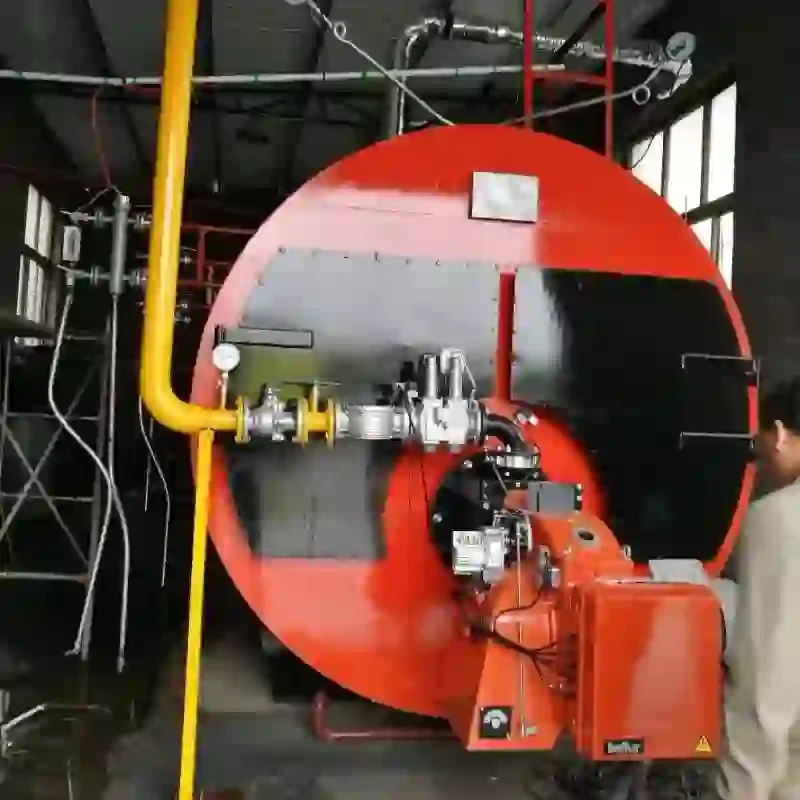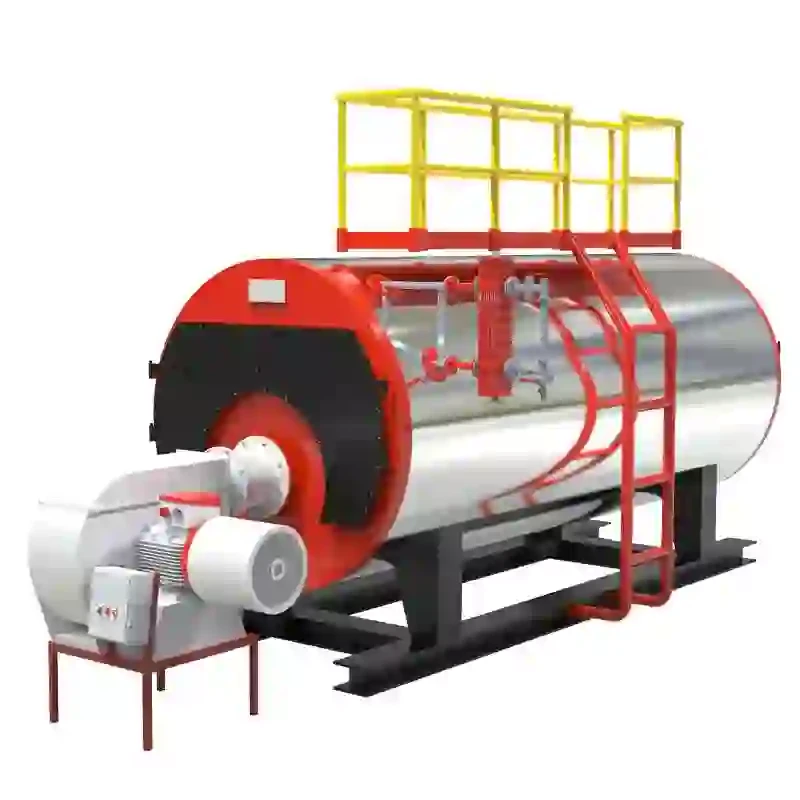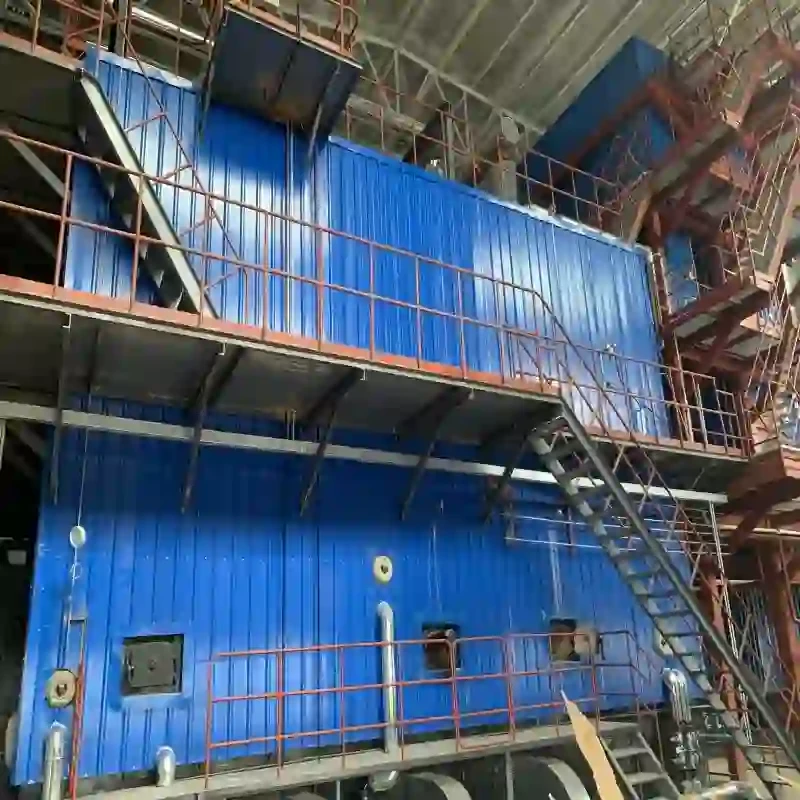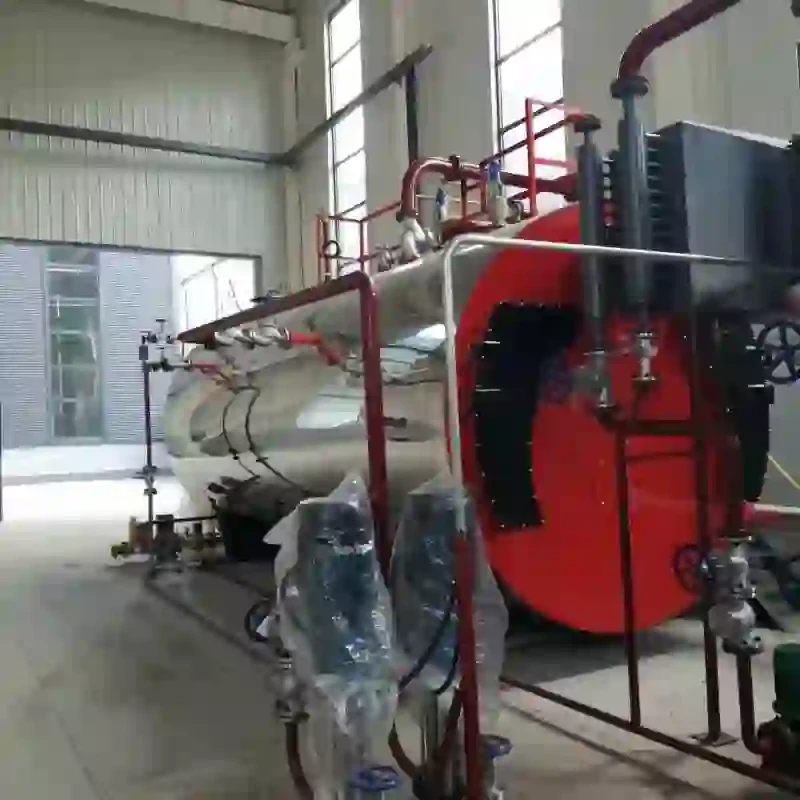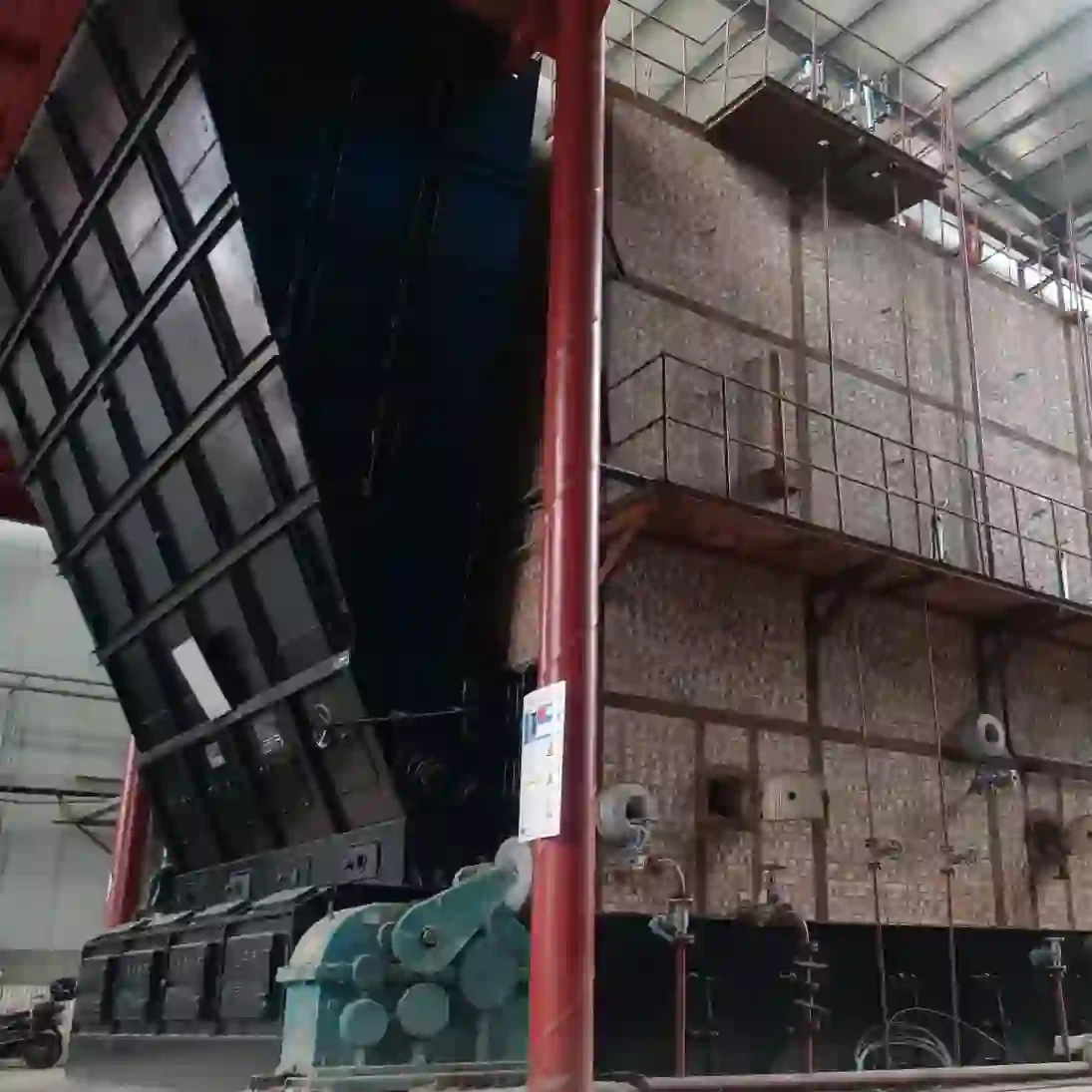
Sep . 22, 2025 11:55 Back to list
High-Efficiency Commercial Oil Fired Steam Boiler Solutions
Industry Trends and Market Demand for Commercial Oil Fired Steam Boilers
The global industrial landscape is experiencing a dynamic shift towards enhanced energy efficiency and stringent emission controls. In this evolving environment, the demand for robust, reliable, and high-performance steam generation solutions remains critical across numerous sectors. Specifically, the commercial oil fired steam boiler segment continues to hold significant market share, particularly in regions where natural gas infrastructure is limited or where fuel flexibility is a strategic operational imperative. Recent market analysis indicates a steady growth in demand, driven by industrial expansion, modernization projects, and the need for consistent, high-pressure steam in heavy industries. Manufacturers are increasingly focusing on innovations that improve thermal efficiency, reduce operational costs, and comply with evolving environmental regulations, such as lower NOx emissions.
The versatility of oil as a fuel source, coupled with advancements in combustion technology, positions the oil fired steam boiler as a vital asset for sustained industrial operations. Key industry trends include the integration of smart control systems for optimized performance, the use of advanced materials for extended service life, and modular designs that facilitate easier installation and maintenance. These innovations collectively contribute to a lower total cost of ownership and enhanced operational safety, making these boilers an attractive option for decision-makers prioritizing both performance and economic viability.
Understanding the Commercial Oil Fired Steam Boiler: Core Principles
A commercial oil fired steam boiler is an advanced heat exchanger designed to generate steam by combusting fuel oil. These systems are engineered for industrial applications requiring substantial quantities of steam for processes such as heating, sterilization, power generation, and chemical reactions. The fundamental principle involves burning fuel oil in a combustion chamber, transferring the resulting heat through a heat exchange surface to water, thereby converting it into high-pressure steam.
Core components typically include a robust pressure vessel (shell and tubes), a high-efficiency burner, a sophisticated control system, feedwater pump, and various safety devices. Modern designs prioritize multi-pass flue gas systems to maximize heat transfer and optimize fuel utilization. The water-tube or fire-tube configurations are selected based on specific pressure, capacity, and application requirements, with fire-tube boilers commonly favored for lower to medium steam capacities due to their simplicity and ease of maintenance, while water-tube boilers are chosen for higher pressures and larger capacities.
Manufacturing Process: Precision Engineering for Durability and Performance
The manufacturing of a furnace oil fired steam boiler is a meticulous process demanding precision engineering and adherence to stringent quality control standards. This ensures the boiler's longevity, operational safety, and optimal performance under demanding industrial conditions. Below outlines the typical process flow:
-
1. Material Selection and Preparation:
High-grade boiler steel (e.g., SA-516 Grade 70 for pressure parts, SA-106 Grade B for tubes) is selected based on specified pressure, temperature, and corrosion resistance requirements. Materials undergo rigorous chemical analysis and mechanical testing to meet international standards such as ASME BPVC (Boiler and Pressure Vessel Code), EN 12953, and GB 150. Plates are cut to size using CNC plasma or laser cutting for precision.
-
2. Forming and Shaping:
Steel plates are rolled, pressed, and formed into the boiler shell, dished ends, and furnace components. Tube sheets are precisely drilled using CNC machining. This stage ensures structural integrity and dimensional accuracy.
-
3. Welding and Assembly:
Critical components are assembled and welded using advanced techniques such as submerged arc welding (SAW), shielded metal arc welding (SMAW), and gas tungsten arc welding (GTAW). All welding procedures are qualified to ASME Section IX or equivalent, and welders are certified. Non-destructive testing (NDT) methods like X-ray radiography, ultrasonic testing, and magnetic particle inspection are extensively employed to ensure weld integrity and detect any flaws.
-
4. Hydrostatic Testing:
After fabrication, the pressure vessel undergoes a hydrostatic test at 1.25 to 1.5 times the design pressure, as per ISO 17025 certified laboratory standards, to verify its strength and leak-tightness. This critical step ensures safety and compliance.
-
5. Insulation and Refractory Application:
High-temperature insulation (e.g., rock wool or ceramic fiber) and refractory linings are installed to minimize heat loss and protect the boiler casing, enhancing thermal efficiency.
-
6. Component Integration and Final Assembly:
The burner, control panel, pumps, valves, and safety interlocks are integrated. The control system undergoes functional testing, including PLC programming and HMI calibration, to ensure reliable automated operation.
-
7. Painting and Finishing:
The boiler exterior is painted with industrial-grade, corrosion-resistant coatings to protect against environmental degradation and ensure aesthetic quality.
The average service life of a well-maintained commercial oil fired steam boiler designed and manufactured to these standards is typically 20-30 years, often exceeding this with proper operational practices and preventative maintenance. Advantages in typical scenarios include high energy saving due to optimized combustion and heat recovery systems, and enhanced corrosion resistance through material selection and appropriate feedwater treatment. Targeted industries include petrochemical, metallurgy, food and beverage, pharmaceutical, textile, and water supply & drainage.

Technical Specifications and Performance Parameters
Modern oil fired steam boiler systems are engineered for high thermal efficiency and reliability. The following table illustrates typical technical specifications for a range of commercially available models, highlighting parameters critical for industrial decision-makers.
Typical Product Specifications: Oil (Gas) Steam Boiler
These specifications highlight key technical advantages, including a high thermal efficiency rating, often exceeding 92% and reaching up to 96% with integrated economizers, which significantly reduces fuel consumption and operational costs. The three-pass wet-back design optimizes heat transfer by maximizing flue gas residence time, ensuring thorough heat absorption. Furthermore, advanced burner technology ensures stable combustion, minimal unburnt fuel, and compliance with increasingly stringent environmental regulations concerning NOx and SOx emissions. Integrated safety features and robust construction materials contribute to exceptional reliability and a prolonged service life, making these units a sound long-term investment.
Application Scenarios and Industry Impact
The versatility of oil fired steam boiler systems makes them indispensable across a broad spectrum of industrial applications. Their ability to deliver consistent, high-pressure steam is crucial for processes demanding precise temperature control and energy input.
- Petrochemical Industry: Used for process heating, distillation, stripping, and reactor temperature control.
- Food and Beverage: Essential for sterilization, cooking, pasteurization, and cleaning-in-place (CIP) systems.
- Textile Manufacturing: Provides steam for dyeing, finishing, and drying processes.
- Pharmaceuticals: Critical for sterilization, humidification, and heating in drug manufacturing facilities.
- Paper and Pulp: Utilized in drying, cooking, and bleaching processes.
- Water Treatment & Utilities: For heating and evaporation processes in water purification plants.
Experience Highlight: A major food processing plant reported a 15% reduction in fuel consumption after upgrading to our high-efficiency oil fired steam boiler manufacturer system. The integrated economizer and automated control system provided stable steam pressure, leading to improved product consistency and a significant cut in operational expenditures. The plant manager noted, "The new boiler drastically improved our energy footprint and provided the reliability our production lines demand, even during peak operational hours."
Advanced Features and Customization Solutions
Modern commercial oil fired steam boiler systems incorporate advanced features designed to enhance efficiency, safety, and ease of operation. These innovations are crucial for meeting the dynamic demands of contemporary industrial environments.
- High-Efficiency Burner Technology: Utilizing multi-stage or modulating burners to achieve optimal air-fuel ratios, leading to complete combustion, lower fuel consumption, and reduced NOx emissions.
- Economizers and Air Preheaters: Integrated or external units recover waste heat from flue gases to preheat feedwater or combustion air, significantly boosting overall thermal efficiency to over 96%.
- PLC-Based Smart Control Systems: Fully automatic operation with HMI touchscreens, enabling precise control over steam pressure, temperature, fuel consumption, and safety interlocks. Remote monitoring and diagnostic capabilities enhance operational reliability.
- Variable Frequency Drives (VFDs): Applied to boiler fans and pumps to optimize motor speed according to load demands, resulting in substantial energy savings.
- Automatic Blowdown Systems: Precisely manage boiler water conductivity, preventing scale formation and corrosion, thereby extending boiler life and maintaining heat transfer efficiency.
Customization Solutions: Recognizing that each industrial application has unique requirements, leading manufacturers offer comprehensive customization options. These include variations in steam capacity, design pressure, fuel type flexibility (dual-fuel options), footprint optimization for limited spaces, specialized materials for corrosive environments, and integration with existing plant control systems. Our engineering team works closely with clients to tailor boiler solutions that perfectly match their operational needs and budgetary constraints, ensuring maximum return on investment and seamless integration.

Vendor Comparison and Selection Criteria for Oil Fired Steam Boilers
Selecting the right oil fired steam boiler prices involves a comprehensive evaluation of various factors beyond initial cost. Prospective buyers must consider long-term operational efficiency, reliability, environmental compliance, and the quality of after-sales support. Below is a comparative overview highlighting key criteria:
Boiler Comparison Matrix (Illustrative)
When evaluating commercial oil fired steam boiler options, consider the total cost of ownership (TCO), which includes not only the initial purchase price but also fuel costs, maintenance expenses, and potential downtime. A boiler with higher initial investment but superior efficiency and reliability can yield significant savings over its operational lifespan. Always verify certifications, warranty terms, and the manufacturer's track record in your specific industry. Long-standing manufacturers with a robust engineering department often provide better customization and long-term support.
Ensuring Reliability: Certifications and Quality Assurance
Authoritativeness in the manufacturing of commercial oil fired steam boiler systems is built upon a foundation of stringent quality control, adherence to international standards, and verifiable certifications. Our commitment to excellence is demonstrated through compliance with:
- ISO 9001:2015: Certified Quality Management System, ensuring consistent product quality and continuous improvement.
- ASME Boiler and Pressure Vessel Code (BPVC): Adherence to Section I (Power Boilers) and Section VIII (Pressure Vessels), guaranteeing compliance with the highest standards for design, manufacturing, and testing in North America and globally.
- CE Marking (PED 2014/68/EU): Compliance with the European Pressure Equipment Directive, allowing boilers to be marketed and sold within the European Economic Area.
- EAC Certification: For exports to the Eurasian Economic Union (Russia, Kazakhstan, Belarus, Armenia, Kyrgyzstan).
- Local Regulatory Approvals: Such as DOSH in Malaysia, MOM in Singapore, ensuring regional compliance.
With over 30 years of experience in steam boiler manufacturing, our track record includes successful installations for prominent international partners across petrochemical, pharmaceutical, and food processing industries. Our boilers undergo a multi-stage inspection process, including third-party verification, detailed material traceability, and comprehensive performance testing, all documented to provide complete transparency and assurance to our clients. This rigorous approach ensures that every boiler leaving our facility meets or exceeds both industry benchmarks and client expectations for safety, efficiency, and durability.
Real-World Application: Case Studies
These case studies highlight the tangible benefits and successful deployment of our oil fired steam boiler solutions in various challenging industrial environments.
Case Study 1: Petrochemical Processing Plant
Client: A leading petrochemical complex in Southeast Asia.
Challenge: The client required a high-capacity, reliable steam source for a new cracking unit, with stringent demands for consistent steam pressure and minimal downtime, alongside strict local environmental regulations for NOx emissions.
Solution: We supplied and commissioned two 15 t/h furnace oil fired steam boiler units, equipped with ultra-low NOx burners and integrated economizers. The boilers were designed for heavy fuel oil, providing operational flexibility and cost efficiency given regional fuel availability.
Results: The boilers consistently delivered steam at the required 1.25 MPa with an operational efficiency exceeding 94%. NOx emissions were maintained below 50 mg/Nm³, comfortably meeting local standards. The redundant setup ensured continuous operation, contributing to a 10% increase in plant uptime and a 7% reduction in overall fuel costs due to high efficiency.
Case Study 2: Major Textile Mill Modernization
Client: A large-scale textile dyeing and finishing mill in India.
Challenge: The existing boiler infrastructure was old, inefficient, and struggled to meet the fluctuating steam demands of modern dyeing machinery, leading to inconsistent product quality and high energy bills.
Solution: A 10 t/h oil fired steam boiler with a fully automated PLC control system and VFD-controlled fans was installed. This allowed for precise modulation of steam output based on real-time process requirements.
Results: The mill reported a 20% reduction in specific fuel consumption (fuel per unit of fabric processed) and a significant improvement in dyeing consistency due to stable steam supply. The intuitive HMI interface simplified operations, reducing the need for constant manual adjustments and freeing up operator time for other critical tasks. The investment payback period was projected at less than 3 years.

Trust and Partnership: Support and Commitment
Building lasting trust with our B2B clients is paramount. We achieve this through transparent processes, robust support services, and clear commitments for every commercial oil fired steam boiler we deliver.
Frequently Asked Questions (FAQ)
-
Q: What is the typical lead time for a new oil fired steam boiler?
A: Standard models typically have a lead time of 8-12 weeks from order confirmation to ex-works delivery, depending on capacity and specific customizations. Expedited options may be available upon request. -
Q: What warranty is provided with your boilers?
A: We offer a comprehensive 24-month warranty on the pressure vessel and 12 months on auxiliary components from the date of commissioning or 18 months from shipment, whichever comes first. Extended warranty options are available. -
Q: Do you provide installation and commissioning services?
A: Yes, we offer supervised installation and comprehensive commissioning services by our certified engineers to ensure optimal performance and seamless integration into your facility. Training for your operational staff is also included. -
Q: How do you handle after-sales support and spare parts?
A: Our global service network provides 24/7 technical support and rapid dispatch of spare parts. We maintain a robust inventory of critical components to minimize downtime, and we offer preventative maintenance contracts.
Lead Time & Fulfillment
Our manufacturing facilities are optimized for efficient production, with a typical lead time for standard boiler configurations ranging from 8 to 12 weeks. Complex, highly customized units may require longer, a schedule for which will be provided upon detailed project scope agreement. We prioritize clear communication throughout the manufacturing and delivery process, providing regular updates to ensure seamless project coordination.
Warranty & After-Sales Support
Every boiler is backed by an industry-leading warranty that covers both the pressure vessel and auxiliary components, ensuring your investment is protected. Our commitment extends far beyond the sale, with a dedicated global network of service engineers providing comprehensive after-sales support, including remote diagnostics, on-site troubleshooting, routine maintenance, and guaranteed spare parts availability. We offer tailored service agreements to suit your operational requirements, ensuring your boiler operates at peak efficiency for its entire lifespan.
Conclusion
The modern commercial oil fired steam boiler represents a critical asset for diverse industrial operations, offering a blend of robust performance, fuel flexibility, and advanced technological integration. As industries continue to evolve, the emphasis on high thermal efficiency, reduced emissions, and unparalleled reliability will only grow. By choosing a boiler from a reputable manufacturer committed to rigorous engineering standards, comprehensive certifications, and proactive after-sales support, businesses can secure a sustainable and cost-effective solution for their steam generation needs. Our focus on customization, coupled with a proven track record, ensures that our clients receive not just a boiler, but a complete steam solution engineered for long-term operational excellence and profitability.
References
- American Society of Mechanical Engineers (ASME). Boiler and Pressure Vessel Code.
- International Organization for Standardization (ISO). ISO 9001:2015 Quality management systems – Requirements.
- European Parliament and Council. Pressure Equipment Directive 2014/68/EU.
- U.S. Department of Energy. "Steam System Best Practices."
- Energy & Environmental Research Center (EERC). "Combustion and Emissions Control Technologies."
-
Comprehensive Guide to Steam Boiler Water Treatment: Benefits, Trends & Solutions
NewsNov.19,2025
-
Comprehensive Guide to Steam Boiler Operation and Efficiency
NewsNov.18,2025
-
Understanding Steam Boiler Working Principle: Efficiency, Safety, and Innovation
NewsNov.18,2025
-
Understanding Steam Boiler Function: Key to Industrial Efficiency and Sustainability
NewsNov.15,2025
-
Comprehensive Guide to High Pressure Boilers PDF - Specs, Applications & Trends
NewsNov.15,2025
-
Reliable Steam Boiler Factory Solutions for B2B Industries
NewsNov.14,2025
Related PRODUCTS






